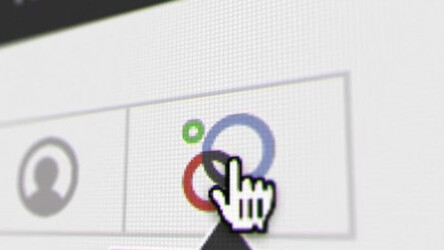
Andy Hertzfeld worked on the Macintosh project at Apple after having been hired on in 1979 as Apple employee #435. He was one of the main authors of the system software and the User Interface toolbox.
After working at Apple, Andy left and founded three companies including Radius and Eazel. In 2005, Andy was hired on by Google. Over the last couple of years, Andy has been working on the Google+ project, bringing his experience in design to the Circles grouping feature.
Andy had a few minutes to talk to us recently and shared some of his insights into the design of Google+, including Circles, how that design will influence the rest of the Google+ project and, eventually, all of Google’s products. We even managed to sneak in some questions about the future of computing and user interfaces and got some interesting answers from one of the people that was there when consumers first got their hands on what would set the tone for the next three decades of computer interaction, the Mac.
Oh, and we talked about Bob Dylan and Steve Jobs a bit too.
TNW: How has interface design changed from the Mac project until now?
Andy: I mean the machine, the average machine, someone is using is literally hundreds of thousands of times more powerful. Really it’s incredibly gratifying that the dreams we had with Mac that were just inklings are now in the full fruit of their realization. We really can do so much more for the users. Back in the Mac days, just barely being able to get a picture up on the screen was great. Whereas now, the production values are…you are limited by your imagination more than you’re limited by the hardware.
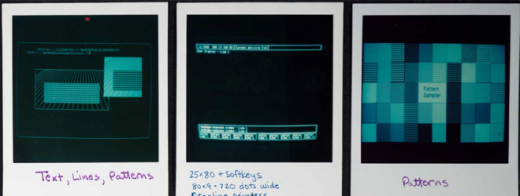
The other thing is, it really is mainstream now, the net and computer use in general is part of the everyday life of the common man. Back 30 years ago when we were doing the Mac we had dreams that someday that would happen. But it’s been here now for, for a decade or so, I would say. This stuff is as mainstream as it gets. It’s so exciting to have an audience in the billions, as opposed to like with the Mac, it was more like the hundred thousands at first.
The other thing is that the tools are so much better to create. So, you can create stuff that would have taken months 30 years ago [in] days or hours now. You can iterate much faster, you have so many more resources at your disposal.
TNW: That kind of leads into, as far as your personal process in concerned, creating something like Google+. Has it changed a lot from the early days? Do you still start out with a pencil sketch or has your process evolved? Do you use only new tools or you have ways of doing things that you’ve carried through the whole way?
Andy: Well some of it depends on who you’re working with. If I am working on something by myself, it’s pretty different than if I’m working on a substantial team. But really, my essential method is still the same, which is basically I like to get something going as soon as I possibly can in actual code. Maybe there’s a pencil sketch in my notebook. But even before I know what I am doing I am sort of, doing it.
The way to make great UI is through tight iteration. You’ve gotta try things out. At least, I’ve never been smart enough to know an idea is going to work until I try it. So I, as quickly as I can, I get something going that is just the barest at first. I try to get to the essence of the idea as quickly as I can. But that sometimes takes a while so you just get a framework going and then you start iterating it, making it better and better.
In a way I’m kind of selfish because the main thing I’m trying to do is please myself. I want to make something I’m excited about.
Audience number zero of my work is always me. The first thing is just, do something to impress myself and then, of course I start showing it to people and getting feedback and then that feedback tells you how it works out, you know, often one idea leads to another. So, I try to be just very open to the moment and let the software itself tell me what to do next.
TNW: Cool, that process of iterating and creating was obviously put into practice with Google+. You don’t develop something like circles for instance without a lot of testing and sculpting, But was the initial idea of the Circles, like the friends and the family having their own discreet Circles and then being able to put people into separate circles. Was that instantaneous, like an ‘aha’ moment or was it something that started out much, much different and was sculpted into what it is now?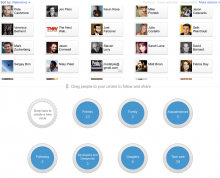
Andy: Well it was kind of obvious that you’d want to be able to kind of categorize people in groups. I won’t take credit for the idea myself, I would say it was just sort of in the air. But, I’d also credit Joseph Smarr who I worked closely with for being sort of being the theorist. I am more the UI creator as opposed to the deeper theorist about social networks. But I would say that there were two things. One is just the idea of categorizing people, that was pretty obvious. Then there was the core idea of the circle editor which was trying to make that fun, engaging, something that you would want to do because it can get tedious. So, we wanted to reward the user for doing it, putting a smile on their face and trying to make it so enjoyable they keep on doing it.
TNW: So the animations, the feeling of dragging people in and out and the paper clip and all that stuff. It sort of adds that element of drawing the user in, rather than just ticking boxes to put this person in this group, this person that group.
Andy: Yeah, it was my idea to use the drag and drop approach and I had known from my previous experience all the way back to the Mac, that drag and drop can be a very satisfying gesture if you get feedback there. There’s a physicality to it, that’s a little different than just clicking on text.
TNW: As far as the way the Circles work, they seem to be a very distinct statement that’s different than most of other products in Google’s arena. Do you think that the design of Google+ and Circles will be informing the design of the rest of Google eventually?
Andy: Well that’s sort of true to software in general. You’ll know you have done something worthwhile when people start copying it. And if the design is good enough and successful, I’d imagine none of them at Google but outside Google people will start doing things more that way. It’s a little too early to say but I was kind of shocked and gratified when I saw that one or two days after we launched some kids at Facebook kind of cloned the interface. I was impressed by how good a job they did in so short a time, but I took that as the sincerest possible compliment.
TNW: Sure, it’s a validation of the concept that it works with a completely different social network. It seems as though its some sort of a base concept that works.
Andy: Yeah, and then another thing I should clarify is that just at the time we were rolling out Google+, Google had a broader effort to refresh the visual design across Google. And it’s not so much that my work influenced that, except the tone, it was part of it. We were part of this big visual refresh.
TNW: Right.
Andy: So, it’s not that we influenced Google but we realized that a consistent experience, just like we did with the Macintosh, the basic breakthrough of the Macintosh was, hey applications can share a common user interface. So, that works both at the interaction level and at the visual level and, and we’re part of this effort to make Google more beautiful, more fun and more engaging.
TNW: The interface of Google+, when you compare it against the other products across the Google spectrum, it looks denser. It contains more information but not only that, the types of information that are contained in each entry are easily recognizable. If it’s an image, you can recognize instantly that it’s an image, in this post or it’s just text, things like that. So, it seems to be more dense than other products in Google which have tons of white space. Was that intentional?
Andy: Yeah, yeah. White space helps the user. Complexity is sort of the enemy of the user. Most people can’t do too much at once, so, the white space lets it breathe. On the other hand information density is good for them too. So, they don’t have to click, click, click to see what they’re trying to find. So the art of an excellent design is coming up with the right balance. Having breathing room and having it look simple, but still having everything that they want to do right at their finger tips. That’s what we try to do and of course we don’t always succeed. But the goal.
TNW: Sure. And those design features, do you think that the way the circles act, and the way they were designed to be a natural sort of grouping, do you think they will have success in enticing the regular user of Facebook or whatnot to adopt Google+? Do you think that the forecast is good so far?
Andy: Yeah, so far I couldn’t be more gratified at how the work has been received. You know, you never know. You take your best shot. I also have thick enough skin from doing it in the past. You’re not going to make everyone happy, the same exact thing that the delights one person offends another. So you know, you can’t make everyone happy but in the main, I myself and the team really couldn’t be more excited. There’s nothing more motivating than putting something out there and having people love it. That just makes you want to do more and more.
TNW: It’s that same old thing that about any artist, even ones that offer work commercially, that it’s not even the purchasing, it’s the enjoyment…
Andy: That’s right, there is an emotional component to what we do and it’s the best part about it, you know? You work for a year and really hardly anyone can get to see it that’s not within the walls of the company and then it is such an ecstatic feeling to have not only users finally get a chance to play with it but to have them love it. And not everyone loves it, but enough people do that we’re on cloud nine.
TNW: Yeah, one hundred percent is never going to happen. Now, am I understanding correctly that you are going to be taking a larger role in the rest of the design of Google Plus now, outside of circles?
Andy: Yeah, I have already started. Most of the time I was working on it, I was focused on the Circle editor and now I’m trying to work more broadly to try and make all of Google Plus as engaging as I can. You know some of it is identifying and fixing the problems and of course now we have a flood of feedback, so in the short term really our job is to just listen to our users and find the problems that you never could have…and this happens at every level, there is the server level, can we bear up to the load of millions and millions of users. But I’m especially concerned with the UI now that people have it filled with hundreds of people what are the pitfalls we really couldn’t see it until we have the user base and we are flooded with feedback. The exciting part is distilling that and very, very quickly, as quickly as we can, fixing various problems.
TNW: Right, it’s like building a boat in dry dock and then putting it in water and plugging all the little holes…
Andy: Exactly, exactly…
TNW: And then you know…
Andy: Now we’ve got to plug the leaks.
TNW: Exactly, got to hammer that cotton in.
Andy: Yep…
TNW: Now, just to kind of shift gears a little bit. The invention of the Mac and then, it’s a personal feeling but I think it is shared by a lot of people, the iPhone, indicated a major shift in the way that people compute. In the space of two or three years the way people used computers and thought about computers changed.
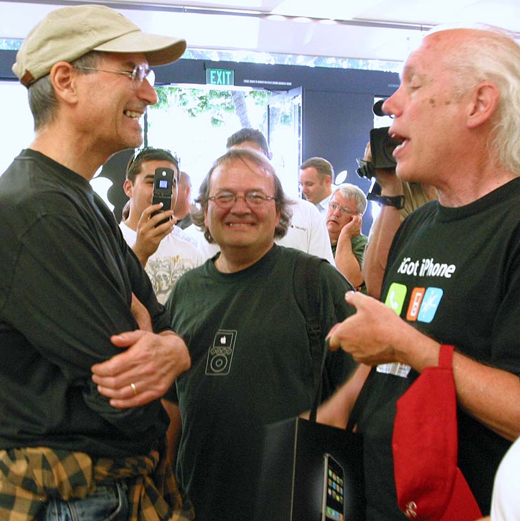
Andy: Yeah, yeah in so many ways the iPhone is very, very similar to the original Mac especially, of course, in the common element of Steve Jobs but in lots of different ways it’s the same kind of breakthrough. But I really do believe that when you talk about the Macintosh and the iPhone, I think you are missing a really big step in between right in the middle of that which is the web, and the iPhone is a creature of the web as much as it is a descendent of the Macintosh.
TNW: Because with the Mac you had the interaction between the user and the computer that’s where your limits were but the iPhone has the network as well?
Andy: Yeah and that’s really the defining characteristic of the iPhone to me at least besides it being always with you, is it’s a portal onto the infinite riches of the net.
TNW: Now, if you were to just venture a guess now that we have the web and a portable computer in our pockets and we have been enjoying a GUI user interface for twenty-five to thirty years, what do you think the next big shift in the way that people compute will be?
Andy: Well, there’s probably multiple dimensions but if you just extrapolate along the line you have already identified, devices are going to become even more personal and you are going to have an even more intimate relationship with them. Part of what I would consider to be the breakthrough of the iPhone is what I call ‘natural UI’. Instead of rolling a little box on the table you are actually touching the thing so I think that natural UI is going to continue.
Voice is going to become a bigger and bigger part of it, especially for phones because phones are made for talking into. Also, lets say in your car you don’t want to have your attention distracted by a screen so you’ll just talk to it eventually.
Right now the computer fits in your pocket, soon you’ll be wearing it, it will be part of your glasses or a little ear piece things are going to get even smaller yet and become more intimate and I think you’re already seeing it. You’re going to have many such devices in many different form factors as they both get cheaper, more powerful, and more useful.
One way of saying it is that the center of gravity won’t be in any particular device but essentially the cloud will be the center of your world that’s projected into [them]. Literally everyone will have dozens of different devices.
TNW: So they will become small personal portals onto that data.
Andy: Yeah not even necessarily small, you’ll have a few gigantic ones as well I think. Your living room wall will become one of the devices eventually.
TNW: So, now as far as interaction with the press over the years, Google has been fairly open about their projects and things like that, whereas Apple is almost one hundred percent the opposite. Has it always been that way with Apple or was there a certain shift? Do you remember a time working there or do you think it was after you left that it shifted to a much more secretive stance.
Andy: Well it’s changed a lot in different areas of Apple, back and forth. Apple started out being the most open company you could imagine because Steve Wozniak designed the computer to show off at the computer club. The point of the Apple I and the Apple II were to impress his friends and they started out literally by handing out the schematics of the design for free at the computer club. So it came out of this incredibly open home group computer movement and then in the early days of Apple it was still pretty open.
When I started work on the Mac, we had a little bit of a double standard. Steve wouldn’t let us bring our relatives in but his relatives were fine. I remember when he showed his Mom and Dad the Mac when it was still in its very early stages, he brought his girlfriend by, but we weren’t allowed to do It. Maybe we did it a little bit anyway.
But, Steve was gone from Apple for about a third of its history in the middle, from 1985 to 1997. So again, things were pretty different then. Apple would show off more prototypes. Steve would never show off a prototype, but Apple was doing things like that in that middle period. But then I think [Steve] finally figured out that it is in his business interests to have that maximum element of surprise on his side. If you just leak things out in dribs and drabs no one is going to be all excited when the product is unveiled so by controlling information, Steve likes to control everything because he is a perfectionist and he thinks no one can do it as good as he can, he wants the control and controlling the information is a useful marketing technique, I guess.
TNW: I noticed on a post on Google+ and then on your site, Folklore.org, that you’re a huge Bob Dylan fan. I am, too, my Dad grew up in that era, but he introduced me to it and I grew up listening to him.
Andy: I think Bob Dylan inspires me in so many ways. As a designer, what you’re really trying to do is apply your values to the design, crafting a design is making choices, you know. What is the right choice, and thousands of different details.
And I think Bob Dylan and his creative approach really influenced the Macintosh profoundly through Steve Jobs as well as others on the team and continues to influence me. You know, it’s shaped me, it’s shaped my feelings about the world, and of course that’s what shapes your designs. A phrase I sometimes use is “rebel spirit”. I think Bob Dylan was full of rebel spirit, and I think great products are, too. Because the status quo isn’t good enough, so, to do radical innovation is an act of rebellion.
TNW: Are you still close to Burrell Smith? I know he went on to work at Radius with you after Apple.
Andy: Yeah, I don’t talk to Burrell very much anymore, but I see him occasionally. While we were working on the Macintosh, we bought 2 houses on the same lot, so I’m still a kind of a co-landlord with him in a way, although, I don’t live in that house anymore. One of the main points of developing my Folklore website and then the book that came out of it was to celebrate Burrell. To tell the world how great Burrell was.
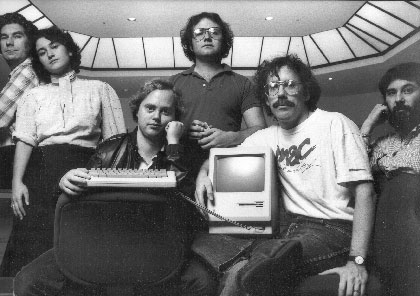
TNW: And I think that has done that. I’ve enjoyed reading stories about him and about the interaction and everything, and I think he’s become more and more impressed with his abilities over the years reading that stuff, so that’s very cool.
You’ve gone on to found three different companies since you left Apple. Do you have plans for more in your future, or do you think Google is your last big project?
Andy: Well, you know, it’s hard to know what the future brings. I can tell you that I wouldn’t start a company for financial reasons; I’ve got plenty of money to last me the rest of my life. So, I would start a company for idealistic reasons. If there was something I thought the world really needed and a startup company was the best way to get it realized, I’d do it
But it’s hard to imagine such a thing compared with the reach of Google. If I can do something effectively at Google, as perhaps Google+ will turn out, I can reach hundreds of millions of people. Whereas, trying to do that as a startup, you need all the stars to align, you need to be very, very lucky to create a startup that going to have a reach comparable to Google.
And then the other thing, you know, I’m 58 years old now, and I have a family and family obligations. I think to some extent, startups are a young person’s game. So, I don’t think so, but I wouldn’t say never.
TNW: If you had to give a software designer some basic advice on how to take what they’ve designed as a user interface and make sure that they’re applying real-world rules to it, what’s the best way for them to anticipate the needs of users?
Andy: Well, feedback. I believe it’s an iterative process. It’s never good enough, you can always make it better. So, you have to get as many users as you can as quickly as you can. Even to this day, like what I’m working on today, the second I have my feature working, the first thing I’ll do, I’ll turn to the guy next to me, “Hey what do you think of this?”
So, you’ve just got to be hungry for feedback, but you also have to be open to it. One thing I learned from Bill Atkinson when I was working on the Macintosh is you really can’t get attached to code. The code that you’ve written could be an impediment to the code that should be written. You have to be willing to throw things away when you have the better idea.
I think it’s really the main difference between the good designer and the great designer is as soon as you see a better way, you have to be willing to go with it, even though it could be very painful to throw away what took you two months to develop. Just because you’ve done that, doesn’t mean it’s the way you should do it. Often each iteration of the design is a stepping stone to the next one.
TNW: Very cool. Thank you very much we appreciate you taking the time to talk.
Andy: Well, it was fun. Thank you.
Get the TNW newsletter
Get the most important tech news in your inbox each week.





